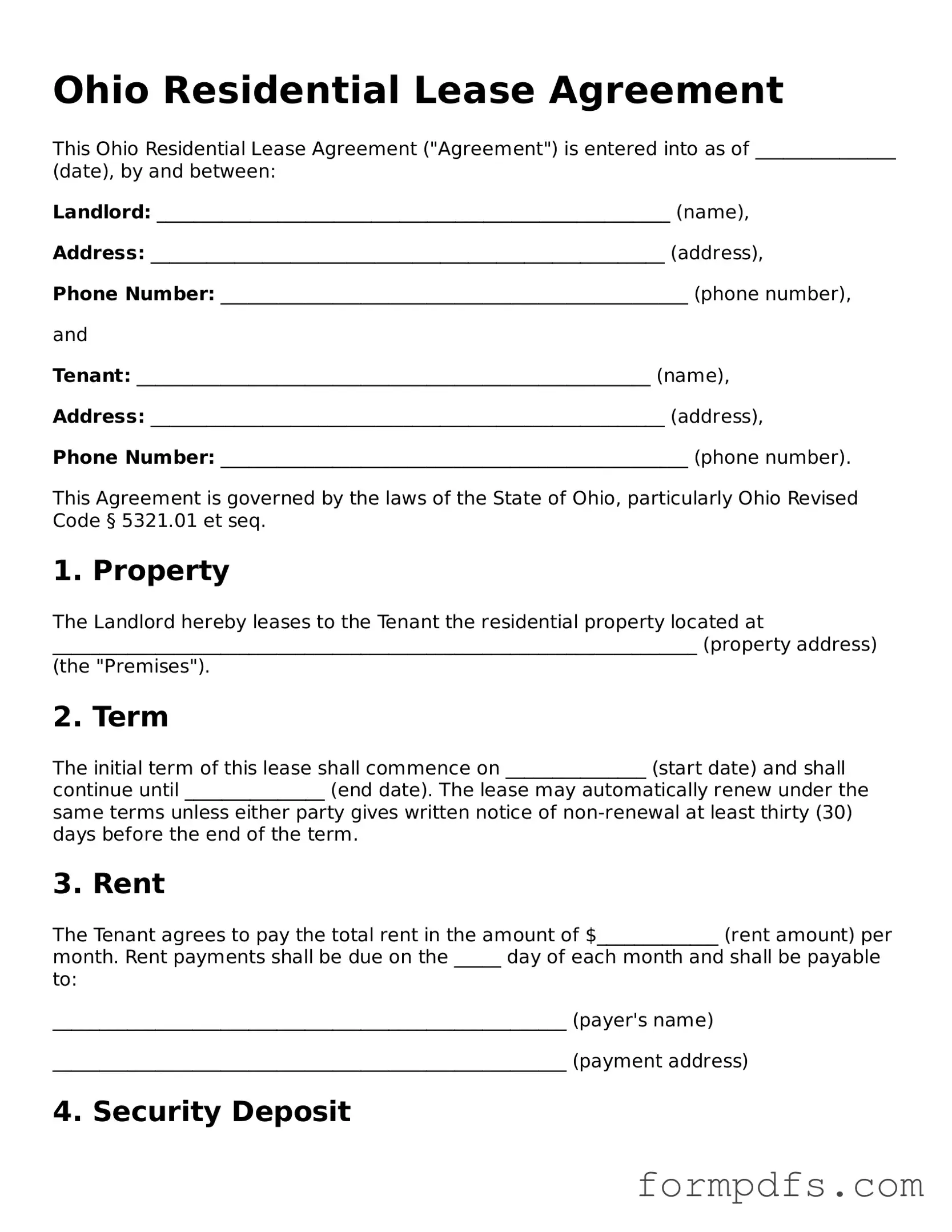What is an Ohio Residential Lease Agreement?
An Ohio Residential Lease Agreement is a legal document that outlines the terms and conditions between a landlord and a tenant for renting a residential property. This agreement typically includes details such as the rental amount, payment due dates, lease duration, and responsibilities of both parties. It serves to protect the rights of both the landlord and the tenant by clearly defining their obligations and expectations during the rental period.
What are the key components of the Ohio Residential Lease Agreement?
Key components of the Ohio Residential Lease Agreement include the names of the landlord and tenant, property address, lease term, rent amount, security deposit details, maintenance responsibilities, and rules regarding pets or smoking. Additionally, the agreement should specify procedures for handling disputes, notice periods for terminating the lease, and any additional terms unique to the rental arrangement.
How long is a typical lease term in Ohio?
In Ohio, lease terms can vary widely. Most residential leases are either short-term, typically lasting one year, or long-term, extending for multiple years. Some leases may even be month-to-month. The chosen lease term should align with both the landlord's and tenant's preferences and needs. It is essential to clearly state the lease duration in the agreement to avoid any confusion.
What happens if a tenant wants to break the lease early?
If a tenant wishes to break the lease early, they may face penalties as outlined in the lease agreement. Common consequences include forfeiting the security deposit or being responsible for rent payments until a new tenant is found. However, tenants may be able to negotiate with the landlord or provide valid reasons, such as job relocation or health issues, which could lead to a mutually agreeable solution.
Are there any specific laws governing residential leases in Ohio?
Yes, Ohio has specific laws that govern residential leases. These laws cover various aspects, including security deposits, eviction procedures, and tenant rights. For example, Ohio law limits the amount a landlord can charge for a security deposit to one month's rent. It is important for both landlords and tenants to familiarize themselves with these laws to ensure compliance and protect their rights throughout the rental process.
